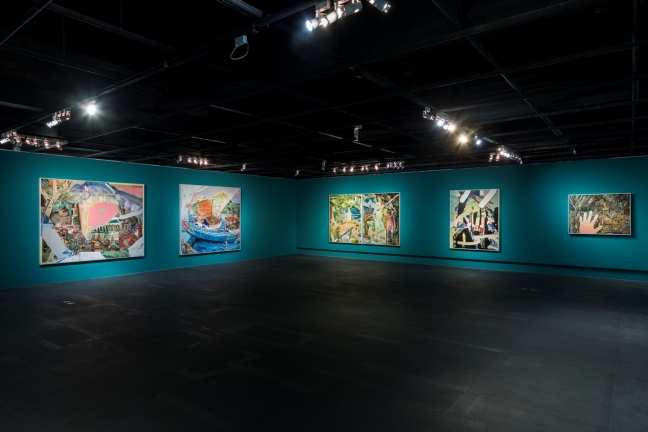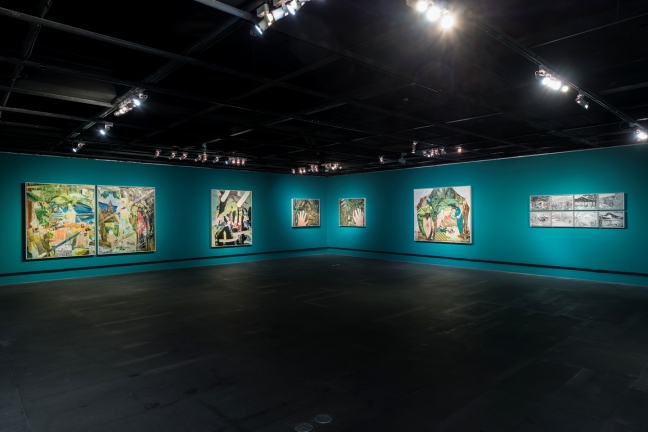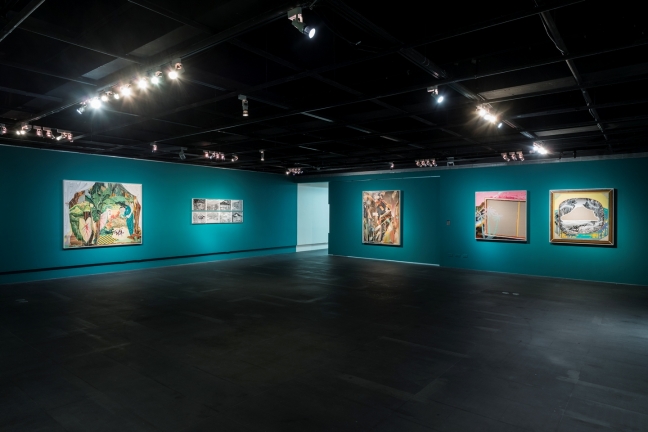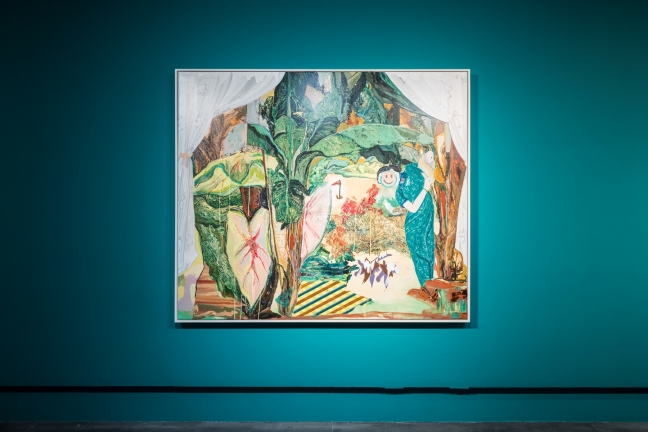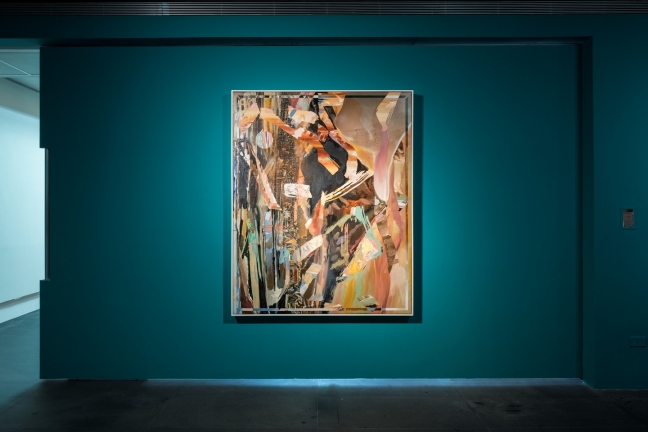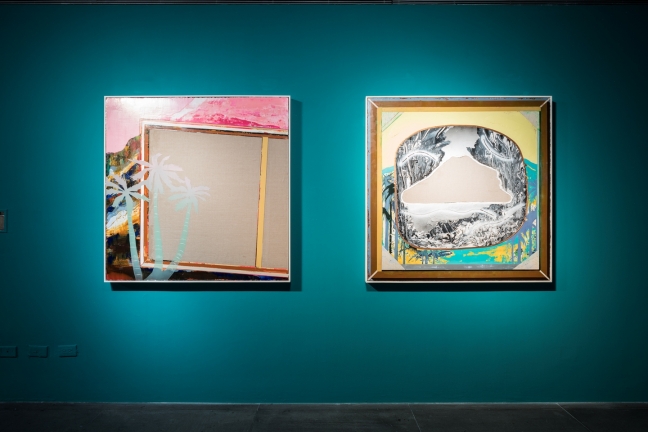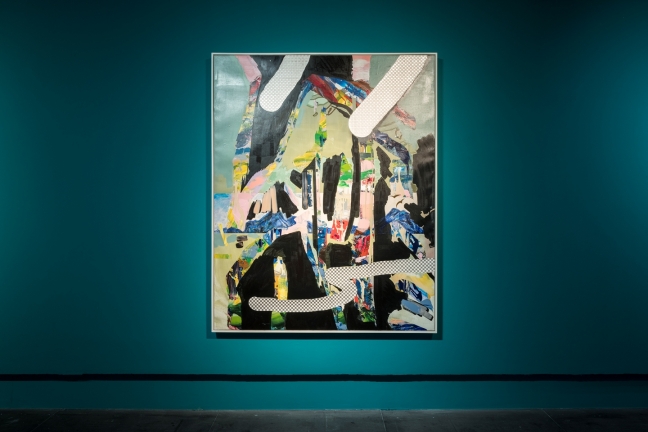Unforgotten – Hsieh Mu-Chi Solo Exhibition
2017.07.21~2017.09.24
09:00 - 17:00
Unforgotten revolves around the history of how I treat traditional landscape paintings with different artistic approaches. Therefore, I am not actually focus upon authentic landscapes but the landscapes in paintings. Geophilosophical Mining, my solo exhibition in 2016, began with the landscape of Guanyin Mountain on account of my personal experience with this mountain. The collection was in an attempt to establish a synchronic display of the same landscape across the art history. These paintings reveal the story of whence we came and whither we go. From that point, I began to pay attention to the concept of how landscape paintings are formed and shaped in Taiwan and traced back to the works of Taiwan’s first generation landscape painting artists in early 19th century. In creative process, the method of imitating and recreating certain painting at the same time is quite thought provoking. Somehow, it leads us back to become a beginner again and try to get closer to the original painting in appearance through imitation; yet, sometimes we have to think outside the box and employ personal creativity. Just as Chen Hui-kun, a senior artist, had mentioned
you should not see only Cezanne in his works but yourself as well.”(note1); it was a tug of war between me and Cezanne. Thus, I decide to name this tug of war
Unforgotten”; that is, one has to study and memorize an object of painting thoroughly and take it in by forgetting; I also add another title
Mountain” behind
Unforgotten” for it treats landscapes and the creators of landscape paintings as it subject matter simultaneously. Landscape painting, as a genre in painting, reflects the world perceived by the artists. It also works as a carrier of an artist’s mind and intention. Therefore, each and every flower or tree in a painting might be certain symbols. There are many rearranged images or sceneries of Japanese banana trees, Guanyin Mountain and Tam-sui in Unforgotten which implies that artists from different periods also carried different concepts and perspectives towards landscape painting. The juxtaposition of these landscape paintings offers a conversation among artists from various contexts and traditions; hence, landscape painting is not merely a landscape painting and painting itself is not the same, either. Every painting is a brainstorming question an artist has to deal with and the process of solving the problem has also become an artist’s train of thought. By asking questions to oneself, an artist tries to answer and the whole process might look like a palindrome in which answer a question by creative process and explain the creative process by asking questions. (note 1) Shaih Lifa (2016). Chapter 9–Personal Study of Art History in Taiwan: Chen Hui-kun, The Inquirer of Paul Cezanne ∕ The Studying Handouts of Taiwan Arts
you should not see only Cezanne in his works but yourself as well.”(note1); it was a tug of war between me and Cezanne. Thus, I decide to name this tug of war
Unforgotten”; that is, one has to study and memorize an object of painting thoroughly and take it in by forgetting; I also add another title
Mountain” behind
Unforgotten” for it treats landscapes and the creators of landscape paintings as it subject matter simultaneously. Landscape painting, as a genre in painting, reflects the world perceived by the artists. It also works as a carrier of an artist’s mind and intention. Therefore, each and every flower or tree in a painting might be certain symbols. There are many rearranged images or sceneries of Japanese banana trees, Guanyin Mountain and Tam-sui in Unforgotten which implies that artists from different periods also carried different concepts and perspectives towards landscape painting. The juxtaposition of these landscape paintings offers a conversation among artists from various contexts and traditions; hence, landscape painting is not merely a landscape painting and painting itself is not the same, either. Every painting is a brainstorming question an artist has to deal with and the process of solving the problem has also become an artist’s train of thought. By asking questions to oneself, an artist tries to answer and the whole process might look like a palindrome in which answer a question by creative process and explain the creative process by asking questions. (note 1) Shaih Lifa (2016). Chapter 9–Personal Study of Art History in Taiwan: Chen Hui-kun, The Inquirer of Paul Cezanne ∕ The Studying Handouts of Taiwan Arts
Unforgotten revolves around the history of how I treat traditional landscape paintings with different artistic approaches. Therefore, I am not actually focus upon authentic landscapes but the landscapes in paintings. Geophilosophical Mining, my solo exhibition in 2016, began with the landscape of Guanyin Mountain on account of my personal experience with this mountain. The collection was in an attempt to establish a synchronic display of the same landscape across the art history. These paintings reveal the story of whence we came and whither we go. From that point, I began to pay attention to the concept of how landscape paintings are formed and shaped in Taiwan and traced back to the works of Taiwan’s first generation landscape painting artists in early 19th century. In creative process, the method of imitating and recreating certain painting at the same time is quite thought provoking. Somehow, it leads us back to become a beginner again and try to get closer to the original painting in appearance through imitation; yet, sometimes we have to think outside the box and employ personal creativity. Just as Chen Hui-kun, a senior artist, had mentioned
you should not see only Cezanne in his works but yourself as well.”(note1); it was a tug of war between me and Cezanne. Thus, I decide to name this tug of war
Unforgotten”; that is, one has to study and memorize an object of painting thoroughly and take it in by forgetting; I also add another title
Mountain” behind
Unforgotten” for it treats landscapes and the creators of landscape paintings as it subject matter simultaneously. Landscape painting, as a genre in painting, reflects the world perceived by the artists. It also works as a carrier of an artist’s mind and intention. Therefore, each and every flower or tree in a painting might be certain symbols. There are many rearranged images or sceneries of Japanese banana trees, Guanyin Mountain and Tam-sui in Unforgotten which implies that artists from different periods also carried different concepts and perspectives towards landscape painting. The juxtaposition of these landscape paintings offers a conversation among artists from various contexts and traditions; hence, landscape painting is not merely a landscape painting and painting itself is not the same, either. Every painting is a brainstorming question an artist has to deal with and the process of solving the problem has also become an artist’s train of thought. By asking questions to oneself, an artist tries to answer and the whole process might look like a palindrome in which answer a question by creative process and explain the creative process by asking questions. (note 1) Shaih Lifa (2016). Chapter 9–Personal Study of Art History in Taiwan: Chen Hui-kun, The Inquirer of Paul Cezanne ∕ The Studying Handouts of Taiwan Arts
you should not see only Cezanne in his works but yourself as well.”(note1); it was a tug of war between me and Cezanne. Thus, I decide to name this tug of war
Unforgotten”; that is, one has to study and memorize an object of painting thoroughly and take it in by forgetting; I also add another title
Mountain” behind
Unforgotten” for it treats landscapes and the creators of landscape paintings as it subject matter simultaneously. Landscape painting, as a genre in painting, reflects the world perceived by the artists. It also works as a carrier of an artist’s mind and intention. Therefore, each and every flower or tree in a painting might be certain symbols. There are many rearranged images or sceneries of Japanese banana trees, Guanyin Mountain and Tam-sui in Unforgotten which implies that artists from different periods also carried different concepts and perspectives towards landscape painting. The juxtaposition of these landscape paintings offers a conversation among artists from various contexts and traditions; hence, landscape painting is not merely a landscape painting and painting itself is not the same, either. Every painting is a brainstorming question an artist has to deal with and the process of solving the problem has also become an artist’s train of thought. By asking questions to oneself, an artist tries to answer and the whole process might look like a palindrome in which answer a question by creative process and explain the creative process by asking questions. (note 1) Shaih Lifa (2016). Chapter 9–Personal Study of Art History in Taiwan: Chen Hui-kun, The Inquirer of Paul Cezanne ∕ The Studying Handouts of Taiwan Arts

